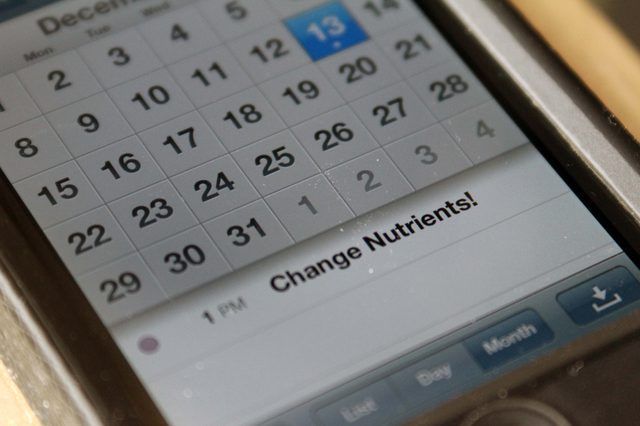Bulbs
Flower Basics
Flower Beds & Specialty Gardens
Flower Garden
Garden Furniture
Garden Gnomes
Garden Seeds
Garden Sheds
Garden Statues
Garden Tools & Supplies
Gardening Basics
Green & Organic
Groundcovers & Vines
Growing Annuals
Growing Basil
Growing Beans
Growing Berries
Growing Blueberries
Growing Cactus
Growing Corn
Growing Cotton
Growing Edibles
Growing Flowers
Growing Garlic
Growing Grapes
Growing Grass
Growing Herbs
Growing Jasmine
Growing Mint
Growing Mushrooms
Orchids
Growing Peanuts
Growing Perennials
Growing Plants
Growing Rosemary
Growing Roses
Growing Strawberries
Growing Sunflowers
Growing Thyme
Growing Tomatoes
Growing Tulips
Growing Vegetables
Herb Basics
Herb Garden
Indoor Growing
Landscaping Basics
Landscaping Patios
Landscaping Plants
Landscaping Shrubs
Landscaping Trees
Landscaping Walks & Pathways
Lawn Basics
Lawn Maintenance
Lawn Mowers
Lawn Ornaments
Lawn Planting
Lawn Tools
Outdoor Growing
Overall Landscape Planning
Pests, Weeds & Problems
Plant Basics
Rock Garden
Rose Garden
Shrubs
Soil
Specialty Gardens
Trees
Vegetable Garden
Yard Maintenance
How to Grow Vegetables in Water
How to Grow Vegetables in Water. Growing vegetables in water, also known as hydroponics, has advantages over cultivating plants in soil. Less space is required with hydroponics since the vegetable roots do not need to spread out through the soil to reach vital nutrients. Instead, the nutrients are provided with the water and are readily available....
Growing vegetables in water, also known as hydroponics, has advantages over cultivating plants in soil. Less space is required with hydroponics since the vegetable roots do not need to spread out through the soil to reach vital nutrients. Instead, the nutrients are provided with the water and are readily available. Hydroponically-grown vegetables are healthier because soil-borne pests and weeds are eliminated. Vegetables grown in water are also less labor-intensive than soil-grown vegetables, according to the Virginia Cooperative Extension.
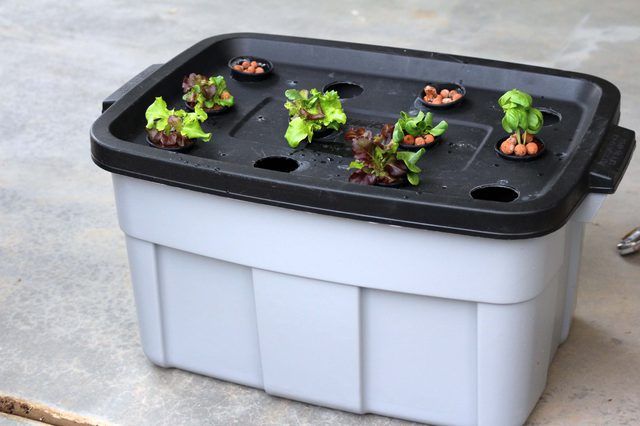
Things You'll Need
Net pots
Hydroponic containers
Scissors
Knife
Grow lamps
Fan
Clay aggregate
Water
Nutrient solution
Step 1
Place the hydroponic containers in a sunny outdoor location. Hydroponically-grown vegetables can be grown indoors, but it's necessary to provide grow lights and a fan to maintain air circulation.
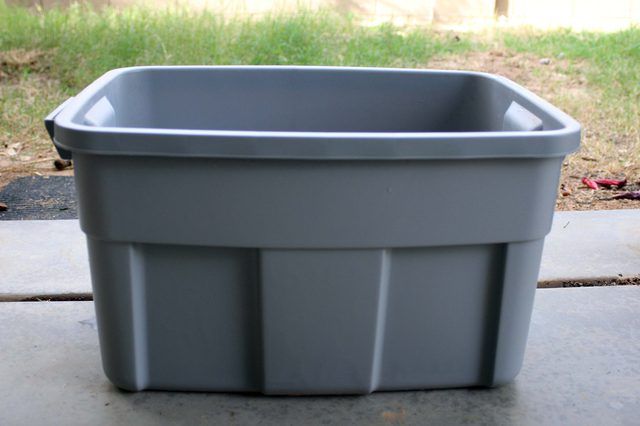
Step 2
Cut a hole in the lid of the container, using scissors. The net pot holds the plant suspended over the nutrient solution using this hole in the lid. The diameter of the hole should be large enough for the lip of the net pot to rest on the surface of the lid.
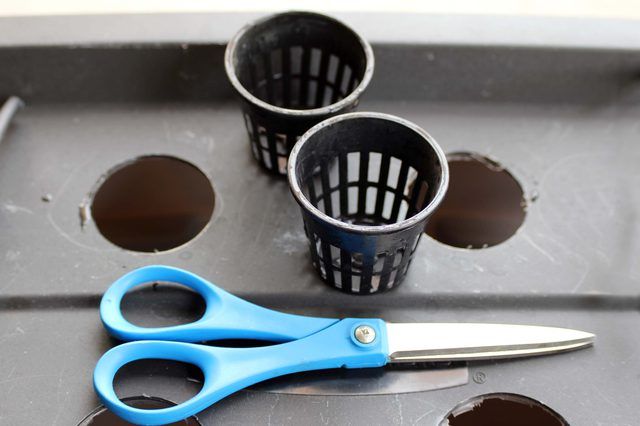
Step 3
Punch holes in the containerís lid with a knife. These holes improve aeration of the plant roots and reduce fungal growth in the water, according to the Virginia Cooperative Extension.
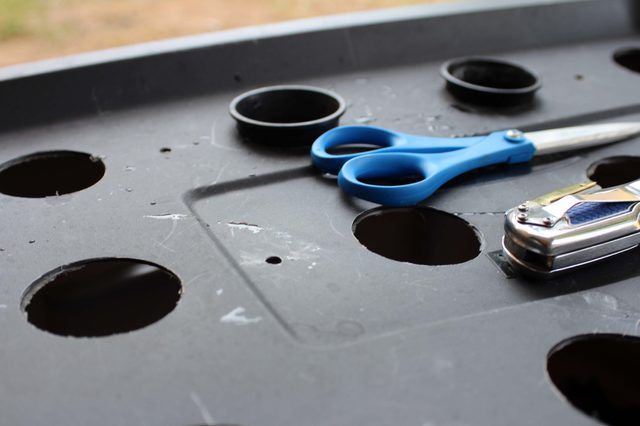
Step 4
Fill your container with water and nutrient solution. Follow the directions on the nutrient solutionís label for dilution ratios. It is important to leave space between the surface of the water mixture and the container lid to allow for air circulation, according to the University of New Hampshire Cooperative Extension.
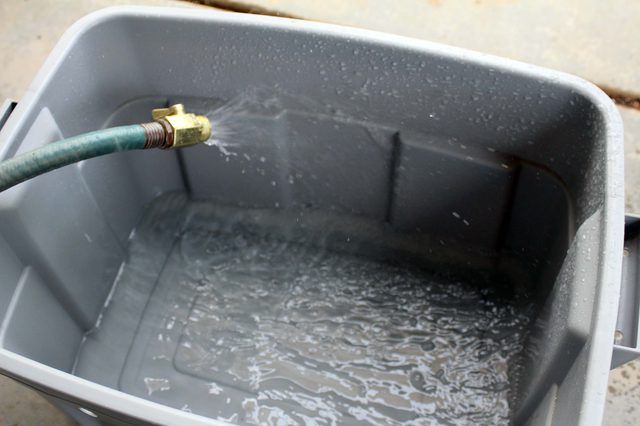
Step 5
Clean the roots of young vegetable plants. Remove the soil and rinse any remaining debris from the plantís roots and stem.
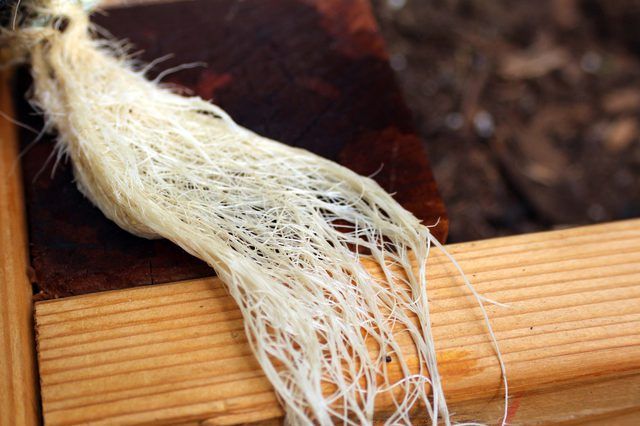
Step 6
Place the plant in the net pot. Hold the base of the stem just below the top of the net pot while gently threading the roots through the openings on the side and bottom of the pot. Fill the pot with clay aggregate, a hydroponic growth medium that holds the plant and roots in place while allowing access to air and water.
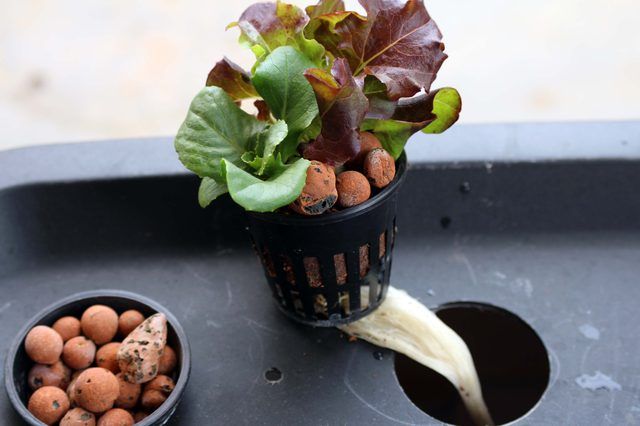
Step 7
Settle the net pot into the hole you cut in the containerís lid. Lower the lid onto the container, making sure the roots hang freely from the net pot into the water and nutrient solution.
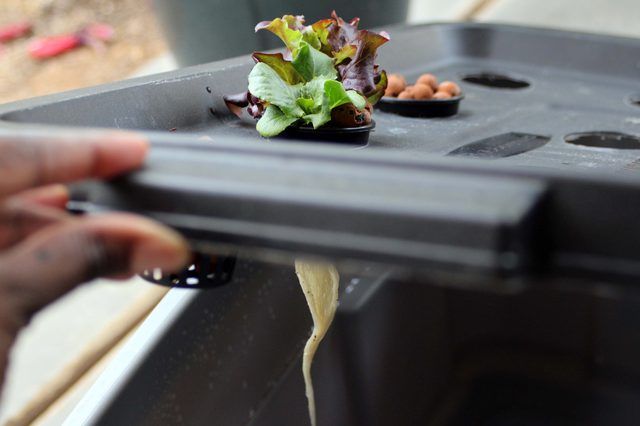
Step 8
Change the water and nutrient solution every two weeks, according to the University of Florida. The plants should receive direct light, from the sun or grow lamps, 14 hours each day, and air from a fan, if indoors.
